The relay is a change
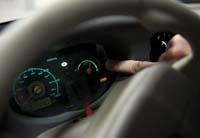
They are saying: the electric car comes. It seems that the electric car has already won the race to look for alternatives to the oil vehicle, leaving behind its competitors.
Until a couple of years ago, in all the quinielas the hydrogen car was mentioned. In fact, hydrogen has important advantages: it is very abundant and only generates water vapor as a waste instead of generating greenhouse gases. However, obtaining hydrogen is still costly and, in addition, its use as a source of energy is threatened by the need to find an effective storage mode. In fact, in addition to being flammable, hydrogen is a very light gas, and a small amount occupies a large volume. Therefore it is necessary to keep it at high pressure or at low temperature in order to be stored. This generates security problems, technological difficulties and high costs.
It was known that for the car of the future out of hydrogen, in addition to remarkable improvements, a technological revolution was needed. But this revolution has not yet come. Meanwhile, the batteries of electric cars have improved a lot: they have been reduced, have more autonomy and have partially overcome the security problems. Governments have supported the electric car through grants and agreements, which has deteriorated the balance: most of the automotive companies are on track to market electric models.
The change seems unstoppable and, if the forecasts are met, the automotive industry shoots in a few years. But the relay will not only affect the automotive industry, but will also represent a major change in electrical infrastructure and lifestyle habits.
Electrical infrastructure
If many of the nearly 800 million cars in the world have to run on batteries, they must connect to the charging grid, which will significantly increase the electricity demand.
Iberdrola has indicated that the massive and trouble-free recharging of electric cars will be carried out by controlling loads through information and communication technologies (ICT). In fact, if thousands of cars were plugged simultaneously at times of increased electrical demand, the electric grid would collapse. That is, the incorporation into the electric system of smart distribution networks to avoid charging in hours of maximum electrical demand. This would also mean a better integration of renewable energies. In fact, the smart network will inform you of the time when electricity is exaggerated in the network and, therefore, the convenience of charging electric cars. So, for example, when there is a lot of wind, more cars will be loaded and less when there is no wind. Another example: the wind towers work perfectly during the night, but many times, due to lack of demand, they have to disconnect from the network. The plug of several electric cars during that time would mean a greater exploitation of energy.
Change in life habits
However, in addition to the electric infrastructure, the electric car will represent a change in the user's lifestyle habits. At present, the tank of the car is filled with fuel in a couple of minutes, reaching an autonomy of more than 700 kilometers. But with the electric car things are going to change a lot.
To begin with, the autonomy of electric cars will not be as big as that of the current cars, since most prototypes have about 150 kilometers. Therefore, in many cases, to charge the electric car it is necessary to plug it almost every day. On the other hand, the electric power saturation of the car will be much slower than the filling of the tank in a gas station: a standard charge will last between six and eight hours and it will be advisable to do so at night.
However, due to the limited autonomy of the electric car, the charge of the battery may in some cases imply the impossibility of waiting at night. For this reason, three-phase quick-charge installations -- higher power outlets -- can be charged for half an hour up to 80% of the total battery capacity. This may be due, on the one hand, to the fact that the charge of the batteries is not linear, since it is much more efficient in the first minutes, and, on the other, to the power offered by the three-phase systems is greater, so the batteries are charged faster. However, it must be taken into account that the application of high power fast charges reduces the battery life.
Another option to overcome the limited range problem can be to go to a battery replacement center that would replace the battery discharged by another fully charged. The company Renault is one of the companies that have opted for the technology of replacement of batteries. But other producers do not see this possibility necessary. In fact, creating the possibility of changing the batteries would require the total compatibility of the batteries of the car models. On the other hand, it should be taken into account that the weight would not facilitate things either, since the batteries weigh more than 150 kilos. "As 80% of European drivers travel less than 80 kilometers a day, they don't need to change battery," explains Jos Manuel Caram of Going Green.
There are many questions to decide, and one of the most important will be the creation of an efficient battery charging infrastructure, met by electric operators and users. Where are the cars going to be loaded at night by drivers who do not have a garage, most of the population? Or how to fix it when it comes to a long journey of over 200 kilometers? There is no doubt that the electric car can be a good solution for the city, but it does present notable shortages and obstacles for the rural environment or for large areas of great population dispersion. "It must be taken into account that the necessary infrastructure for electric cars to function will be as important as the car itself," says Enrique Monasterio del Ente Vasco de la Energía.
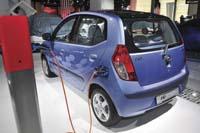
Universal charger universal charger
The infrastructures necessary for the correct operation of the electric cars will be the chargers. In this sense, what happened with mobile phones can be a good experience: As of January 1, 2012, all mobile phones will be marketed with the universal battery charger regardless of brand or model. This will occur 20 years after the appearance of the first mobile phones. Currently there are more than 50 mobile chargers and in many cases it is difficult to find a compatible charger that is not yours.
But it is not the same to stay without a phone on the battery that does not go back or advance on the road. That is why it is important that car manufacturers and companies that have to install infrastructures to charge the electric car make a single plug. "In Europe, at least, all public facilities require a standard charging model, automatic and simple invoicing, similar to that carried out in mobile roaming," explains Peter Moos, head of the development of the electric version of the Smart.
For more than a year, major car manufacturers (Audi, Fiat, Renault, Ford, Mitsubishi, Toyota...) and major power companies (Endesa, EDF, E-On, Enel, EDP, RWE...) sought an agreement to create a universal battery charger. The agreed model will be presented within a few months in the International Electric Committee (CIS) for approval as a single charger. To do this, you must meet a number of requirements: be charged and versatile, safe, reliable and smart and be free of industrial property rights. The result will be seen shortly.
More economical recharge
As it plugs into the charger, the main feature of the electric car is that you will not need oil drops to make kilometers, which will make the charge much cheaper. With the current price of electricity and seeing the average consumption of electric cars with battery, to travel one hundred kilometers will only need to spend one euro and a half. The initial investment in the acquisition of an electric car is a moment problem, but one of the strengths will be the cost of use. In the best of cases, a conventional small car with a simple motor consumes 4.5 liters to travel 100 kilometers. This, taking into account the price of diesel (about 1,2 per liter), is a cost of 5.4 kilometers, almost 4 more than the electric car.
The difference is also remarkable with respect to hybrid vehicles. The average consumption of hybrid cars is around 4 liters per 100 kilometers, in the best of cases, slightly below the conventional cars. This means an approximate cost of 5, very far from the euro and a half from the electric car.
Car with "O" emission?
By not consuming oil, the electric car will also not emit gas from the exhaust. For this reason, on several occasions it has been said that it is a car with emissions "0". But this claim can be a bit fraudulent, since the pollution or not of an electric car will depend on the electricity it hangs with. If electricity comes from renewable energy, then it will be a car with "0" emissions. But if this electricity comes from coal or gas plants - 75% of them in the Basque Country - it is clear that the use of the electric car will mean the emission of polluting gases into the atmosphere.
However, the emission of gases by electric cars will be limited to power stations. Therefore, a city without conventional cars and full of electric cars will be a city without exhaust pipes, without pollution caused by cars and with cleaner air and without acoustic pollution, since electric motors are much quieter than combustion engines.
It is clear that to greater number of electric cars, less dependence on oil, but greater dependence on electricity. The drivers of these cars will be more Homo electricus than ever.
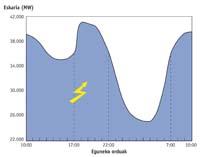
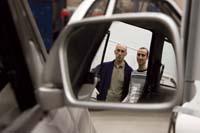
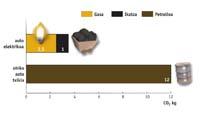
Buletina
Bidali zure helbide elektronikoa eta jaso asteroko buletina zure sarrera-ontzian











